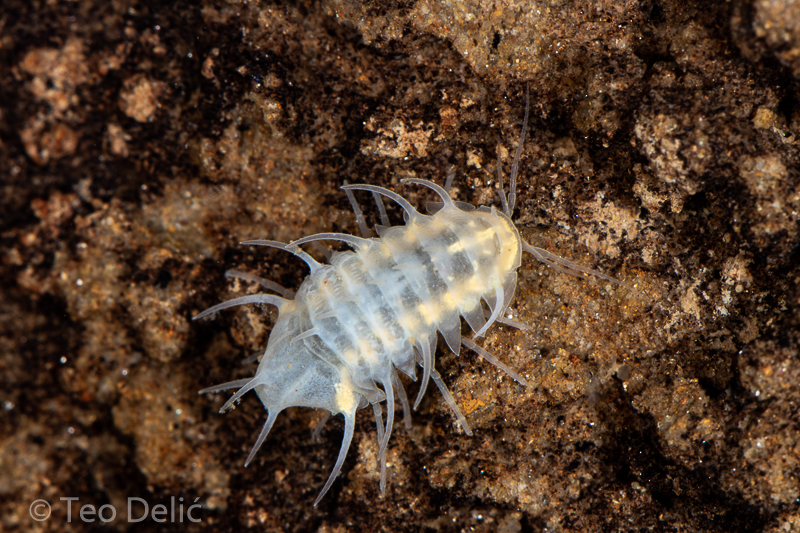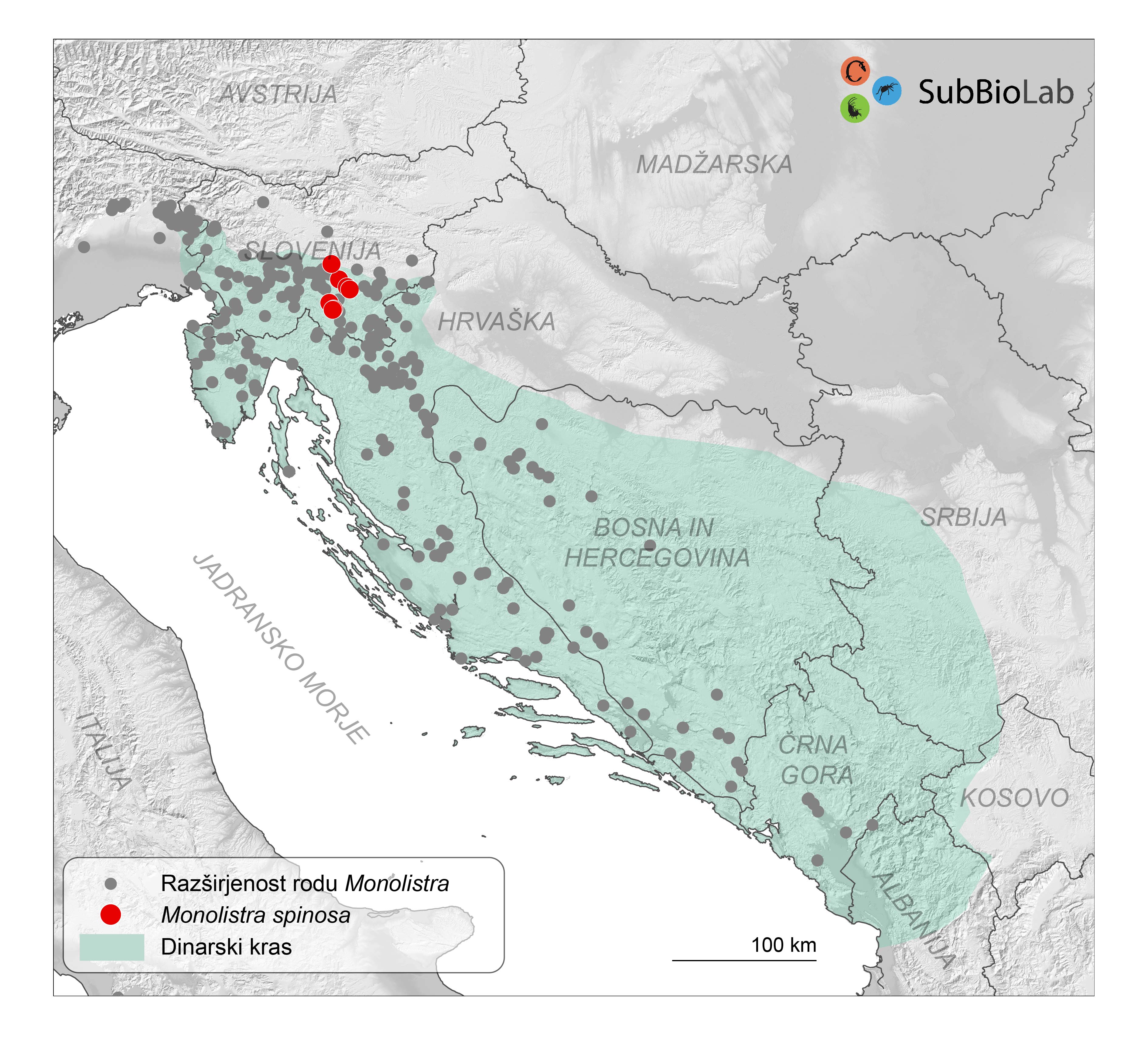CAVE SPHAEROMATID

Scientific name: Monolistra spinosa
Author and year of description: Racovitza, 1929
Family: Sphaeromatidae (sphaeromatids)
Order: Isopoda (isopods)
Subphylum: Crustacea (crustaceans)
Distribution range

Members of the genus Monolistra are one of the groups with the so called trans-Dinaric distribution, i.e. living all across the Dinaric karst, but reaching also beyond its boundaries. The Slovenian name “spiny hedgehog” relates to its ability to roll into a ball when threatened. They live in cave streams and lakes, but they can sometimes be found on dry ground as well.
To date, 35 species have been described which are classified into five subgenera: Microlistra, Monolistra, Monolistrella, Pseudomonolistra and Typhlosphaeroma. They differ according to the shape of the second pair of legs in males (with or without pincers), the ratio of the male vs. female size and the shape of the last abdominal appendages (so called uropods). In some species, the small proportion of males is recorded; a single male may be present in a large group of individuals. This is a major problem and makes the morphological identification of females and larvae extremely difficult or impossible.
Consequently, contemporary molecular techniques involving DNA analyses are crucial for the identification of species. With their help, we uncovered cryptic (hidden) species diversity in Monolistra. The existence of morphologically hardly- or indistinguishable species is quite common in the underground fauna, not only in crustaceans, but also in other groups of cave animals. The similarities (i.e. convergences) are considered to be the result of similar selection pressures influencing the development of subterranean inhabitants.